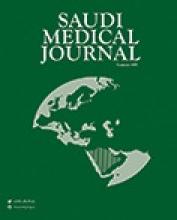Abstract
OBJECTIVE: The purpose of this investigation was to investigate the advantages of early surgery in patients suffering from neuromuscular scoliosis.
METHODS: Between January 1992 and January 1998, 20 patients with paralytic scoliosis, with an average age of 15 years, were treated surgically in the Department of Orthopedic Surgery, University Hospital, Feiburg, Germany. The parameter investigations included correction of the scoliosis independent of preoperative curves, operation time independent of Cobb angles, complications and blood loss. Surgery included a dorsal semi rigid instrumentation with pedicle screws in the lumbo-sacral region and sublaminar wiring in the thoracic area.
RESULTS: The preoperative scoliotic curve measured 73.1°, the postoperative curve 24.5°, the mean correction was 66.4%. The thoracic kyphosis could be corrected from 13.9-25.7°. The operation time was longer and the correction was less if high Cobb angles were found preoperatively. Two wound infections were observed. Rod breakage following a pseudarthrosis occurred in one patient, a refusion was necessary.
CONCLUSION: Cobb angles alone should not be the standard to indicate surgery in neuromuscular scoliosis. If a decreased functional ability, pelvic obliquity or trunk decompensation with reduced vital capacity are found, surgery is more dangerous while the obtained correction is less. Therefore, we recommend early surgery.
- Copyright: © Saudi Medical Journal
This is an open-access article distributed under the terms of the Creative Commons Attribution-Noncommercial-Share Alike 3.0 Unported, which permits unrestricted use, distribution, and reproduction in any medium, provided the original work is properly cited.






